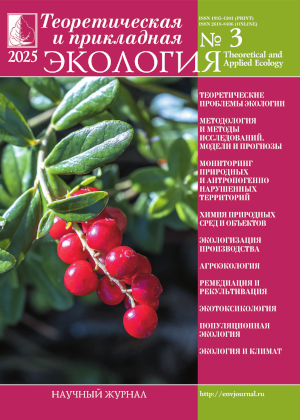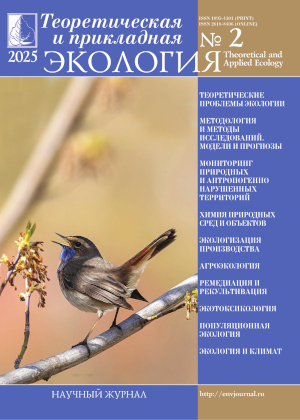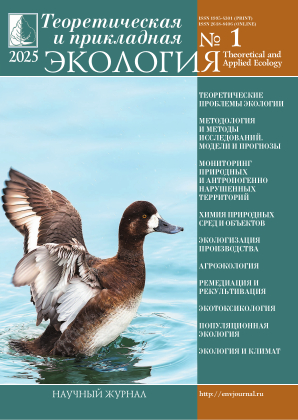 ISSN 1995-4301
ISSN 1995-4301(Print)
ISSN 2618-8406
(Online)
Online version of the journal
|
Monitoring the boundaries of terrestrial biomes on a global scale from data satellite observations |
||||
| А.P. Shevyrnogov, A.A. Larko, G.S.Vysotskaya, T.I. Pisman, L.A. Somova | ||||
| Section: Methodology and research methods. Models and forecasts |
||||
| Global climate change leads to the transformation and imbalance of all natural systems, to a change in the boundaries of biomes. In this regard, it became necessary to monitor the boundaries of land biomes and to search for methods for determining the boundaries of biomes, ecotones and their control. The aim of this work is to monitor the boundaries of biomes, and to study the seasonal dynamics of NDVI dispersion. The methodological basis of the study is satellite observations and the NDVI moving dispersion method. The dynamics of the moving dispersion of NDVI biomes and ecotones of the land from 2000 to 2020 is estimated in the work. As a result of research, a raster map of the spatial distribution of NDVI dispersions for various biomes (plant communities) was constructed. The raster map of the dispersion distribution of NDVI vegetation is based on MODIS satellite data (product MCD12C1). It is shown that dispersions of NDVI biomes (zones with a certain type of vegetation) have low values. In the transition zones between biomes in ecotones, the dispersion of NDVI increases significantly. The raster map was compared with a biome vector map. The coincidence of biomes on vector biological maps and raster maps showing dispersions of NDVI was revealed. The main factors determining the boundaries of biomes are the spatial and temporal distribution of temperatures, the greatest changes of which occur in the south of the tundra zone and in the north-boreal forests. Studies of the dynamics of biotemperature in the tundra for the period 2001–2020 years showed a positive trend. The results of the spatial distribution of NDVI dispersions over the seasons of the year (winter, spring, summer, and autumn) give an idea of the dynamics of phenological processes on a global scale. | ||||
| Keywords: Normalized Difference Vegetation Index (NDVI), biome monitoring, Earth remote sensing, NDVI dispersion, moving split window method |
||||
| Link | ||||
 |
||||
| Article published in number 2 for 2024 DOI: 10.25750/1995-4301-2024-2-029-034 |
||||
|
|
36, Moskovskya street, Kirov, 610000, Editorial Board "Theoretical and Applied Ecology." Phone/fax: (8332) 37-02-77 e-mail: envjournal@vyatsu.ru The journal was founded in 2007 |
||||||




 Select viewing options
Select viewing options